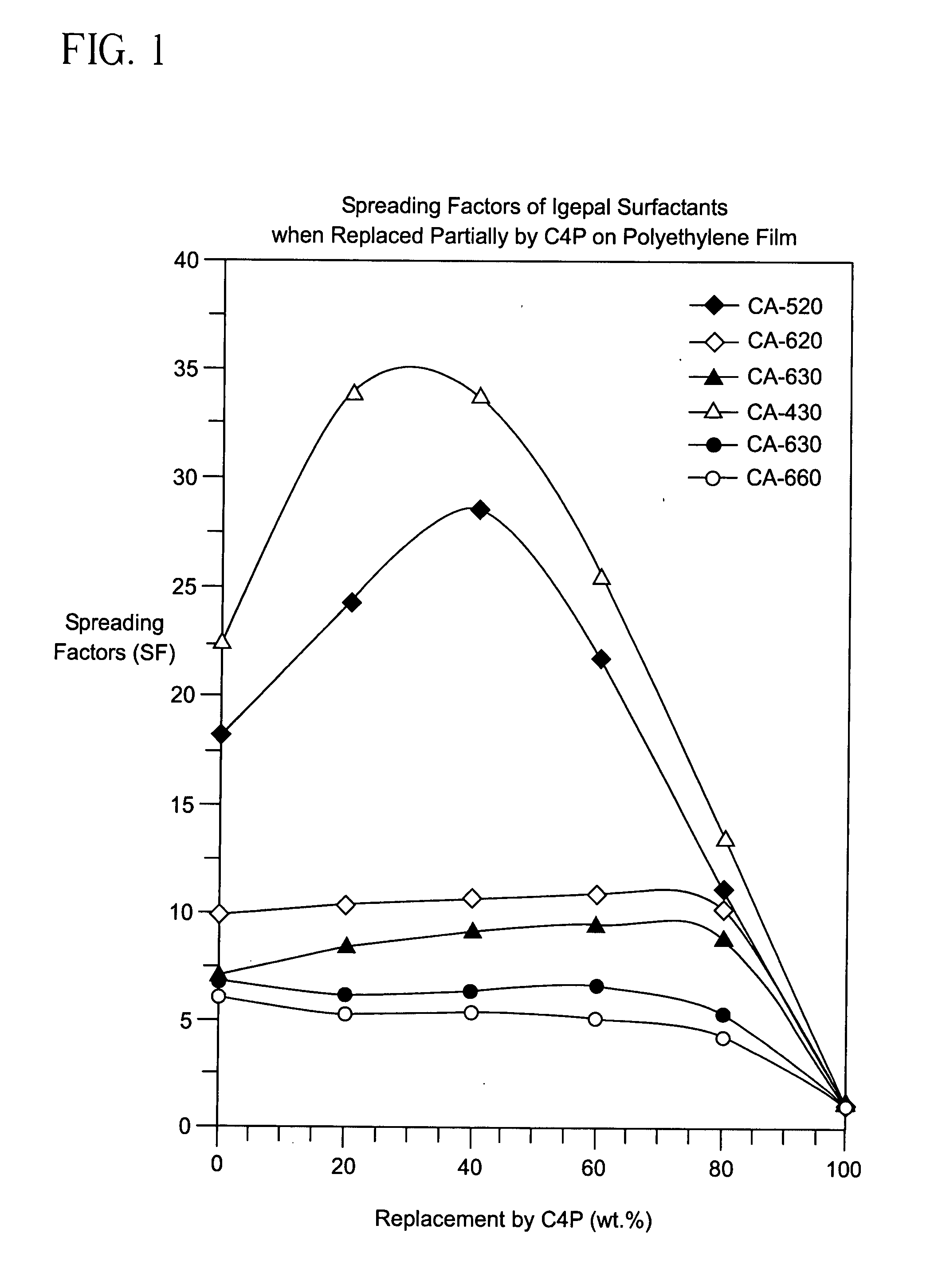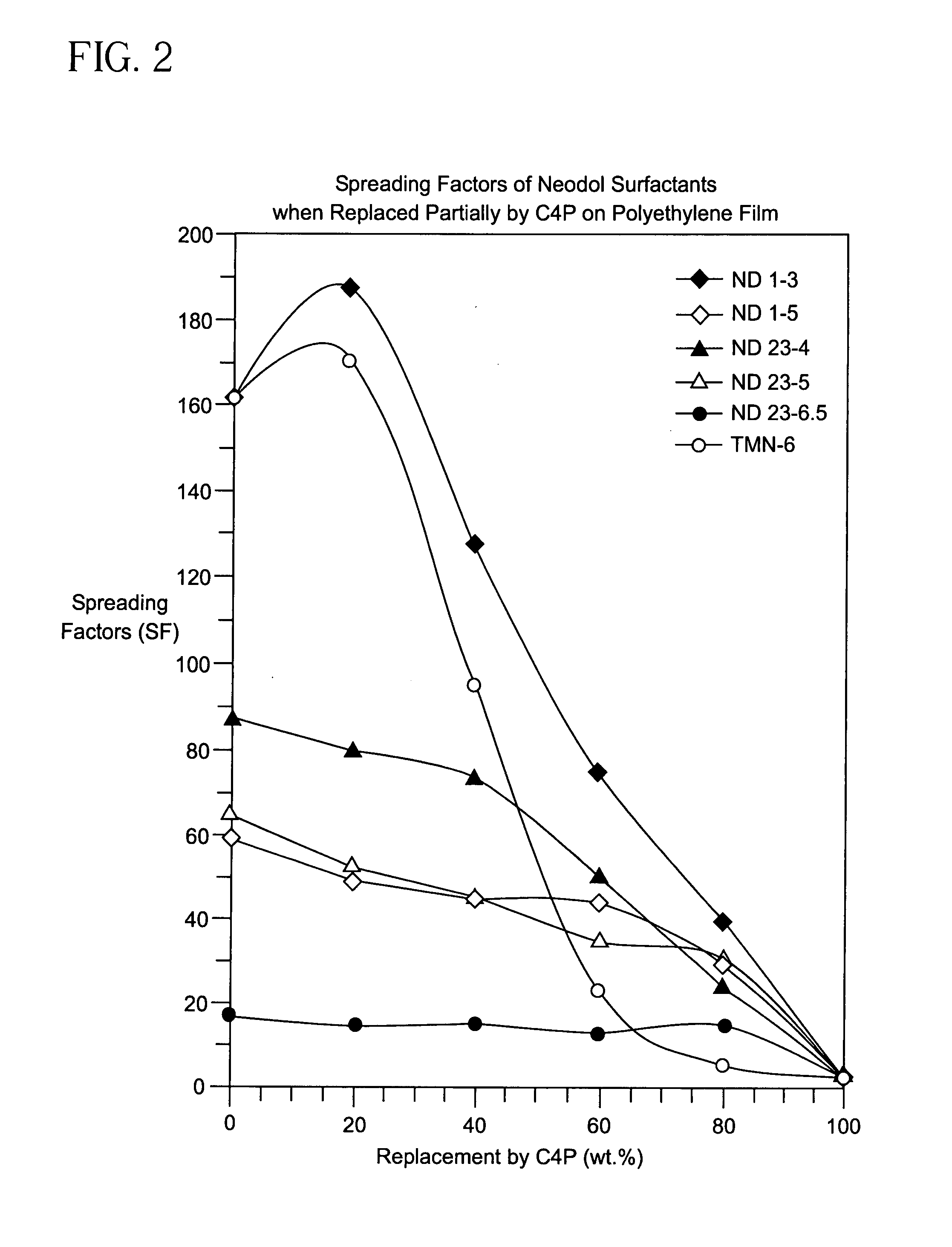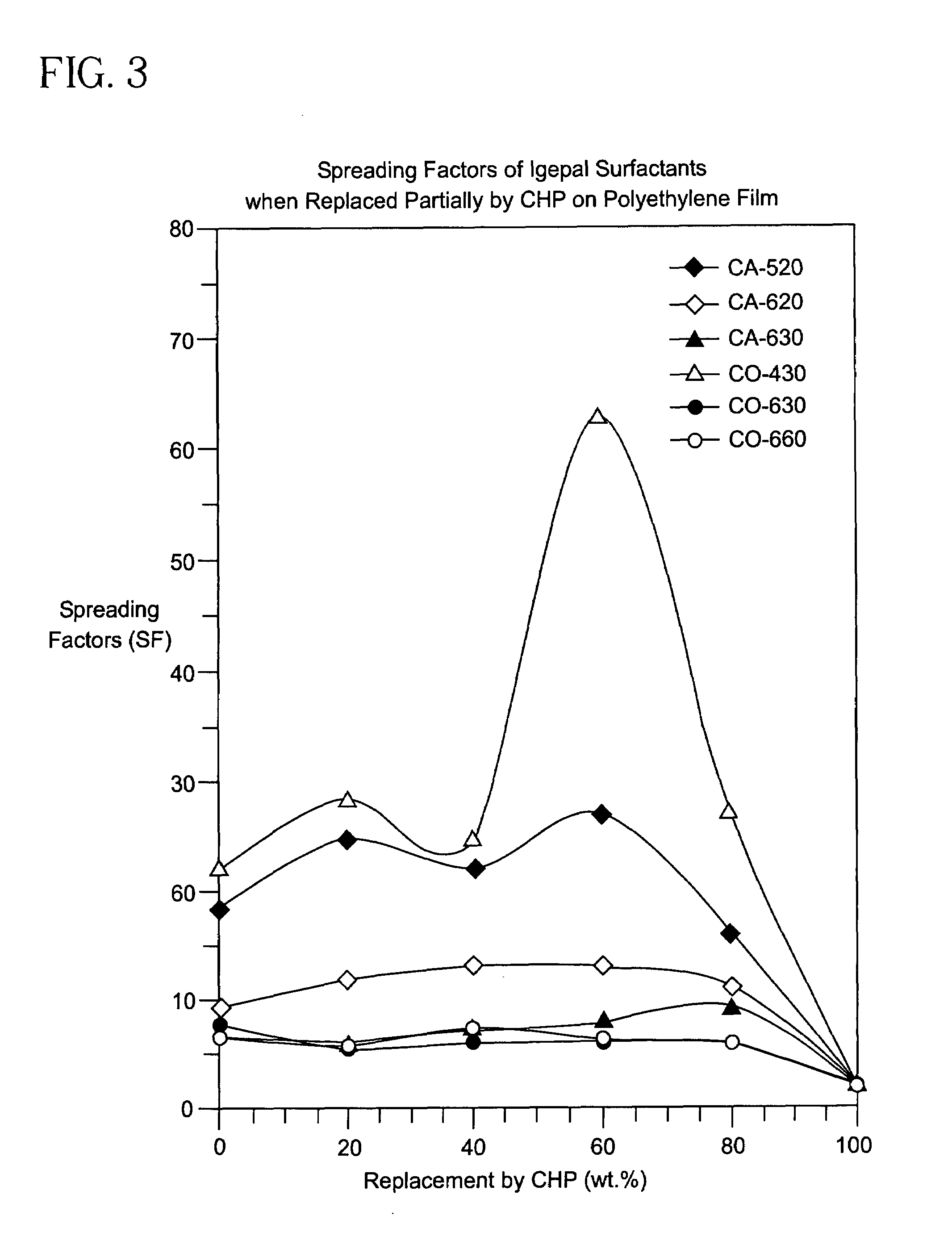Enhancement of the wetting of hydrophobic surfaces by aqueous surfactant solutions
a technology of aqueous surfactant and hydrophobic surface, which is applied in the direction of transportation and packaging, synthetic resin layered products, coatings, etc., can solve the problems of high cost of trisiloxane-based surfactants and hydrocarbon chain surfactants, and achieve the effect of improving wetting properties
- Summary
- Abstract
- Description
- Claims
- Application Information
AI Technical Summary
Benefits of technology
Problems solved by technology
Method used
Image
Examples
example 1
[0177]The Spreading Factors (SF) for the aqueous solutions that are shown in FIGS. 1-22 were determined using the following procedure. First, 20 μL of an aqueous solution containing a surfactant blend having a total concentration of 1.0 g / liter was applied to a polyethylene film using a microliter syringe. The area of the solution on the film was measured 3 minutes after its application at ambient conditions. The same procedure was used with deionized water and the area on the film was measured after 3 minutes. The Spreading Factor was then determined by calculating the ratio of the area of the aqueous solution containing the surfactant blend and the area of the deionized water.
example 2
[0178]In this example, four aqueous solutions were formed by combining different amounts of the surfactant Neodol 1-3 (C11H23(OC2H4)3OH) and the surfactant N-decyl-2-pyrrolidinone. The total concentration of surfactants was 1.0 g / liter. The mixtures contained 20, 40, 60 and 80% by weight of Neodol 1-3 and 80, 60, 40 and 20% by weight of N-decyl-2-pyrrolidinone, respectively. After the mixtures were formed their Spreading Factors were determined according to the method described in Example 1. The Spreading Factors for 100% Neodol 1-3 and 100% N-decyl-2-pyrrolidinone were also determined using the same method. The Spreading Factors were then plotted on the graph shown in FIG. 12. The graph shows that the addition of between 1 to 50% by weight of N-decyl-2-pyrrolidinone to the Neodol 1-3 provides Spreading Factors that are higher than the Spreading Factors for 100% Neodol 1-3 and 100% N-decyl-2-pyrrolidinone.
example 3
[0179]The method of Example 2 was used with different combinations of surfactants. The results are shown in FIGS. 1-22.
PUM
| Property | Measurement | Unit |
|---|---|---|
| contact angle | aaaaa | aaaaa |
| contact angle | aaaaa | aaaaa |
| weight percent | aaaaa | aaaaa |
Abstract
Description
Claims
Application Information
 Login to View More
Login to View More - R&D
- Intellectual Property
- Life Sciences
- Materials
- Tech Scout
- Unparalleled Data Quality
- Higher Quality Content
- 60% Fewer Hallucinations
Browse by: Latest US Patents, China's latest patents, Technical Efficacy Thesaurus, Application Domain, Technology Topic, Popular Technical Reports.
© 2025 PatSnap. All rights reserved.Legal|Privacy policy|Modern Slavery Act Transparency Statement|Sitemap|About US| Contact US: help@patsnap.com



